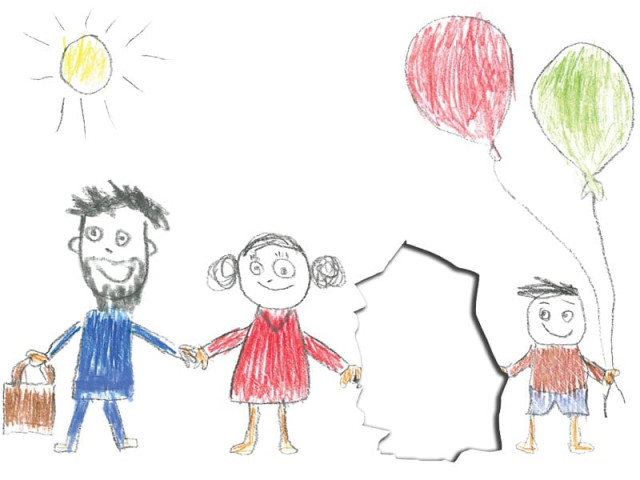
Little did she know her daughter had foreseen her fate.
A few days later, strangers Bhoora, Bashir and Imran abducted her, kept her in a windowless room and repeatedly assaulted her. They later strangled her, gouged out her eyes and dumped the body.
Aliya is one of several minors who over the past three years in Karachi have met an ugly fate – turning them from bubbly beings to bodies beyond recognition.
She was murdered last December in Dastagir, a place that has narrow, dingy lanes with kids playing on the streets. The ghettos comprise rickety, mud-plastered houses. Among these are roadside shops – paan-wallahs, tandoors and cramped general stores. Children are sent to buy provisions and in some instances never return.
Six months later, Aliya’s family continues to be haunted by one question: Why did those men do such a thing?
“They are worse than animals. They are devils,” cried Sara, recalling the last time she saw her daughter, draped in a white sheet before being taken to the graveyard. “Cotton was placed on my girl’s eye sockets; bring [the murderers] to me and I will gouge out their eyes.”
Aliya’s father, Nadir Ali, says “I had no enmity with them. I did not even know them.”
In their single-room house, the family lives in pitiable conditions. Aliya’s belongings, her clothes, a doll and books, have been tucked away in a large box. “I have hidden her things because whenever Sara sees them, she starts crying,” explains Ali, who is a labourer.
Aliya was fond of dressing up and would dab herself with talcum powder whenever she went out. Her daily life revolved around her school and home. In between, she learned the Holy Quran in the area’s mosque and went for tuitions. The life of the little girl, who wanted to be a doctor, was brimming with happiness and energy – until December 12, 2011.
Around 4:00pm, Aliya had returned home from the mosque and was about to leave for her tuition class. Suddenly, she remembered something and rushed out shouting: “Mama, I’ll be right back.” This was the last time Sara saw her.
Witnesses say Aliya, with friend Nida, ran to a camel rider who had promised her a ride. But something was not right... the man asked Nida to dismount, while Aliya kept on sitting. Ignoring her pleas to be let off, the camel and rider disappeared with the little girl.
Aliya’s disappearance made her family hysterical. Up to Azizabad, announcements were made from mosques for her recovery. The Jauharabad police refused to register a case. Three days passed but the girl did not return.
On the fourth day, a call from a social worker changed everything. “Your daughter’s body was found from Gulistan-e-Jauhar yesterday,” the caller said. “It is at the Edhi morgue.”
At the mortuary, Ali recognised Aliya – now a cold corpse. The police eventually arrested Boora, one of the three suspects, but freed the other two, Imran and Bashir, due to “lack of evidence”. Bashir had the nerve to attend Aliya’s funeral prayers.
While Imran went away to his hometown in south Punjab, the next week Bashir tried to rape and murder Aliya’s friend Nida. As she was playing on the street, Bashir told that her brother had fallen into a drain. As the girl hurried to the sewer, Bashir crept up, muffled her cries and took her to his quarters.
“He pushed me under a table and threatened that he would kill me just like Aliya,” said Nida sobbing. Trembling and clenching her hands, she whispered: “I was so scared but I kept on shouting for help.”
Luckily, her screams and her slippers left behind attracted the attention of some boys who broke into Bashir’s house, who tried to flee but was soon after arrested.
Two lanes away from Aliya’s house, Ali opens the door to a small windowless room where the two suspects, who worked as painters, had been living for several months. “This is where they kept my daughter. This is where they raped her,” he said crying. This is not an isolated case. But experts believe there has been a change in pattern. Earlier, the rapist usually knew the victim while these days the perpetrators are strangers.
Previously, such incidents were reported from Korangi and Landhi, but now from also Gulberg and Gulshan-e-Iqbal towns.
The Mobina Town area in Gulshan-e-Iqbal town has a number of slums and is highly susceptible with three cases taking place just this year. Seven such cases surfaced in Jauhar and Mobina Town limits in the past two years.
Rukhsana Siddiqi of the NGO War Against Rape (WAR) says the reason behind this is the arrival of people from South Punjab in these slums. All the alleged rapists arrested hail from this area, she says. However, experts feel there are other factors too.
The average number of children in households in these slums is five who are usually left to play on the streets as both parents work.
Roshni Helpline’s President, Mohammad Ali, blames ineffective policing. “They are busy tackling political unrest and do not focus on child-related crimes,” he said.
Sociologist Rana Asif blames the collapse of the joint-family system which makes children an easy target.
The father of five-year-old Reema, the last victim of such crimes, blames poverty. Living in Haji Leemo Goth, he said that unlike the rich, they have no protection.
FIR
Delayed police response also affects chances of recovery. When the children go missing, their parents rush to the nearest police station but the police refuse to lodge a report and give false assurances instead.
District East SP Abdul Salam Sheikh, while admitting that FIRs are not registered on the spot, said that the police do whatever they can to assist the families. “There is no financial motive. They are just sick people,” he added.
The rapist
At the Mobina Police station, The Express Tribune spoke to the alleged rapist and murderer of a five-year-old girl Reema.
On May 1, Waheed Khan had abducted the little girl while she was playing outside her house. Showing no signs of remorse, he said that he had kidnapped the girl as he was jobless for over a decade. “I felt nothing when I strangled her,” said the 40-year-old man sporting a long unkempt beard.
“I called her family and asked to meet me at a roadside hotel to discuss about the ransom. But when I saw two police mobiles near the hotel on that day, I panicked,” he recalled.
He killed her after five days since no contact could be made with the family. Waheed Khan was tracked by the cell number from which he contacted Reema’s family.
Cases
Advocate Asia Munir, who deals in such cases in courts for years, says that the judgment usually comes out in favour of minors but stressed that the police be active to arrest the criminals in order to speed up the process.
As the cases continue to rise, Sarah Zaman of WAR feels that Karachi being a conflict-hit zone will witness a further surge. But she is optimistic about one project. Recently the Muttahida Qaumi Movement (MQM) teamed up with WAR and chalked out a strategy to check these crimes in its strongholds.
MQM leader Faisal Subzwari says that the party is setting up neighbourhood committees and spreading awareness on how to protect children from strangers. “This is an alarming and unfortunate trend and we are working on it,” he said. The Citizens-Police Liaison Committee and the area police have also been taken onboard regarding these issues, he told The Express Tribune.
*All names of victims and their families have been changed to protect privacy
Why rape and kill?
Psychologist Asha Bedar, while talking to The Express Tribune, makes it clear that rape in such instances has nothing to do with sexual pleasure or lust. “Men rape young girls because they want to feel powerful. It’s all about the thrill of being in control,” she explained.
Bedar, who has worked with NGO Rozan on sexual violence against children, believes that while the feeling of being all-powerful lasts for a very short period, this is the sole reason which triggers the rapists to go for young victims again and again.
She says that men who watch child pornography or those abused in their childhoods are likely to indulge in child molestation when they grow up.
Most of the rapists are married, have healthy sexual lives and do not suffer from any known psychological disorders. But they lack the controlling or powerful factor in their lives, which leads them towards the crime. Poor socio-economic conditions such as unemployment, inflation, and lack of basic amenities such as water, gas and electricity may also be a factor.
The ‘trend’
The oldest reported case of rape and murder of a minor girl in the city was of eight-year-old Tahira on February 5, 1978 – and that too in the Federal B area.
Journalist Zubeida Mustafa recalls that this case was the first in public knowledge and she remembers it because the city had come to a standstill. “Ziaul Haq had to come to Karachi to control the situation,” she added.
People were shocked and enraged. Shops in the locality pulled down their shutters and protesters burnt tyres and blocked traffic. Within a week, five people were arrested and a case was lodged.
Over the years, isolated cases continued emerging, but since 2009 there has been a surge in rape and murder of girls under the age of ten. The average age of victims is six years. The youngest victim was three-year-old Sadia who was raped and murdered by two traffic constables. In three instances, boys were raped and murdered.
Rising...
Statistics issued by War Against Rape (WAR) reveal that four cases of rape and murder of young girls were reported in 2009 and five in 2010. Last year, four more cases were reported, but five cases have already surfaced in just the first six months of 2012.
Roshni Helpline, an organisation for missing children, reports that seven children, including a boy, have been raped and murdered since January. The rape of minor girls has also surged over the years. Last year, 27 per cent of the victims were aged six to 11.
WAR Survivor Support Programme head Rukhsana Siddiqi says that the raped children are killed so that no one can identify the predator. “The rapists prefer to kill the children as they are weaker as compared to an older woman, who can put up resistance,” she said.
Also, if a child reports the case, he is more likely to be believed by the family and the police. However, older females are often blamed for provoking the rapist or having consent when they inform their families or the police about the incident.
Published in The Express Tribune, 25th, 2012.
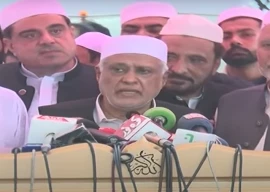
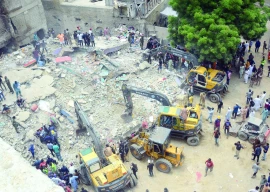
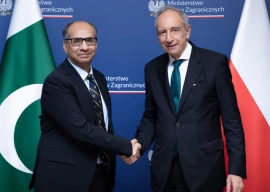

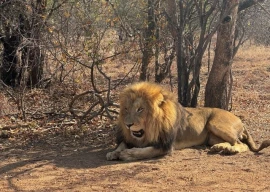
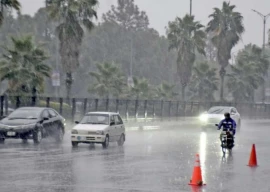











COMMENTS
Comments are moderated and generally will be posted if they are on-topic and not abusive.
For more information, please see our Comments FAQ